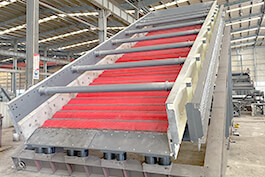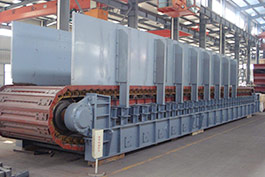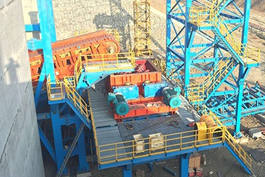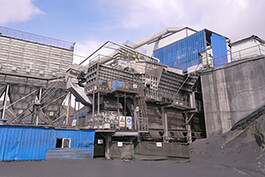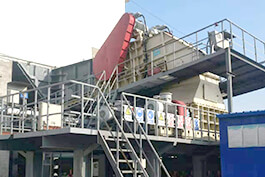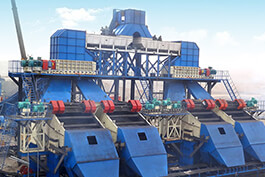The Flip flow screen is a specially designed equipment for efficient screening of sticky, wet and fine-grained materials. It features a large processing capacity per unit area, high screening efficiency, non-clogging of the sieve holes, and low dynamic load. It is widely used in industries such as mining, coal, cement, sand and gravel, power, construction, and municipal waste treatment, and is a highly efficient screening equipment that has been vigorously promoted in recent years.
The sieve plates installed on the Flip flow screen are polyurethane sieve plates. The special structure and movement mode of the Flip flow screen cause the polyurethane sieve plates to repeatedly perform the action of tightening and relaxing, forming a slackening movement. Therefore, the sieve plates of the Flip flow screen can only meet the requirements of on-site use if they possess excellent elasticity, flexibility and wear resistance.
Selection of Polyurethane Screen Plate Molding Methods for Flip Flow Screen
Direct Mold Molding Method
The direct mold molding method involves first designing and manufacturing metal or non-metal molds based on the requirements for the screen plate for screening, and then using the conventional pouring molding method to process the polyurethane screen plate. Since the length of the flip flow screen plate is generally over 1.5 meters, the mold pressing molding method is not suitable for this, and the conventional pressure pouring molding method is adopted. The advantage of this method is that it can complete the processing in one go, saving the cumbersome subsequent processing and having a high material utilization coefficient. However, the disadvantage is that the mold cost is high and the processing cycle is long. If there are many varieties of screen plate hole diameters, the mold cost will be even higher. In addition, the flip flow screen plate generally has a large length-to-width ratio, and there are very high requirements for the flatness of the mold.
Sheet Punching Method
Polyurethane Sheet Punching Method: First, process and manufacture the polyurethane sheet, and then use mechanical punching to make the polyurethane flip flow screen plate. For polyurethane screen plates that are bolt-fixed, the sheet can be processed using the centrifugal casting method of polyurethane elastic body (CPU) or the extrusion or lamination molding of thermoplastic polyurethane elastic body (TPU). For flip flow screen plates that are embedded for fixed installation, the sheet can be processed using non-mold pressing molding (i.e., the rubber material naturally levels in the mold) or centrifugal molding using a dedicated centrifuge. If using TPU, only the extrusion molding method can be used, and not the lamination method. The advantage of this method is that the mold cost is low, the processing is convenient, and the yield is high. However, for TPU varieties, the waste generated from sheet punching still has some utilization value; for CPU, there is no any utilization value and it can only be treated as solid waste.
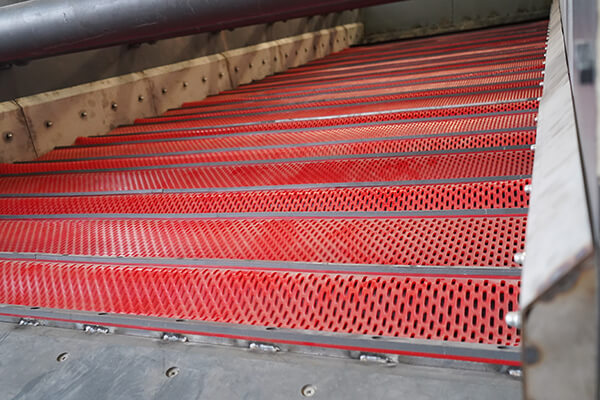
Selection of Adhesive for Flip Flow Screen Polyurethane Screen Plate
The molding compound for injection-molded polyurethane elastomers is in liquid form before being injected into the mold and undergoes reaction and curing to form the product. Depending on the raw material system and processing method used, it is classified into different varieties:
Based on low molecular polyols
Low molecular polyols are important raw materials, including polyester type (such as polybutylene terephthalate, polybutylene sebacate, polycarbonate, etc.), polyether type, and other types.
Based on polyisocyanates
Polyisocyanates affect the reaction characteristics and product performance. There are TDI type, MDI type, and other isocyanate types.
Based on chain extender and crosslinking agent
Chain extender and crosslinking agent determine the growth of molecular chains and the degree of crosslinking, covering alcohol chain extender type, amine chain extender type, and alcoholamine mixed chain extender type.
Based on synthesis process
It is divided into one-step method and two-step method. The two-step method is further divided into prepolymer method and semi-prepolymer method. Different processes have differences in operation procedures and reaction control.
Based on molding temperature
There are hot curing type and cold curing type (i.e., room temperature curing type). The hot curing type requires a higher temperature to promote the curing reaction, while the cold curing type can complete the curing at room temperature, making it convenient for processing and production in different scenarios.
From the analysis of the working conditions and environment of the polyurethane resilient screen usage, it can be known that wear resistance, tear resistance, and flexibility are its key performance indicators. Therefore, improving the flexibility and tear strength of the polyurethane elastomer is the main way to extend the service life of the screen plate.
Conclusion
The Flip flow screen polyurethane sieve plate fully utilizes the characteristics of polyurethane elastomer, such as high tensile strength and tear strength, large elongation rate, excellent resistance to low temperatures, flexibility, and wear resistance. It is an ideal material for the sieve plates of flip flow screens. By using MDI type polyurethane sheets and mechanically punching them for processing, bolt-fixed and embedded polyurethane oscillating sieve plates were manufactured. Their service life is 1.2 to 1.5 times that of TDI type, which saves the overall cost and meets the customer's requirements.



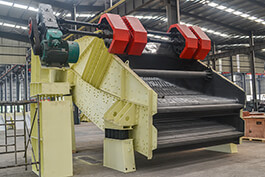
.jpg)
